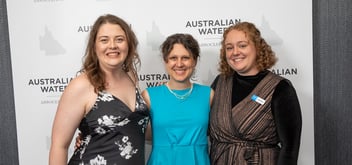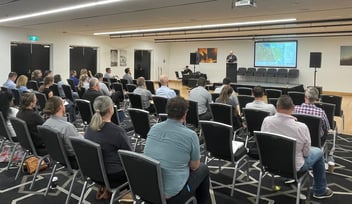Queensland wastewater treatment plants prepare for future flood events
It was six years ago that heavy rains in Queensland caused unprecedented damage to the state’s wastewater infrastructure. Since then, Queensland Urban Utilities (QUU) has implemented a new approach to flood resilience.
QUU was recognised at last year’s Queensland Gala Dinner and Awards Night for its innovative flood resilience program.
Lachlan Green, Program Director Wastewater Network at QUU, said the 2011 flooding event affected the utility’s treatment plants in Oxley Creek, Fairfield, Karana Downs and Esk.
“All our assets, including our switchboards, got flooded. Switchboards are like the heart of the treatment plant; they distribute power to the inlet screens, pumps, blowers, mixers, dewatering equipment, disinfection systems, instrumentation and the control system.
“We had to ask ourselves, ‘What can we do to make our plants more resilient to future flood events?’” Green said.
Green said the biggest concern for wastewater treatment plants in the event of flood is the time it takes to get the plant back online once the waters recede.
“Most of the assets can deal with being temporarily flooded,” he said. “Except for the switchboards. As we all know, water and electricity don’t mix.”
Without electricity, the treatment process is inoperable and untreated sewage can make its way into local water sources.
“The risk is that the environment can be impacted with high nutrient loads entering it, and also there’s potential for public health to be impacted,” Green said.
QUU’s solution was to raise the switchboards above flood level. And while that might sound simple enough, it was actually quite a complex process.
“While raising the roofs was not that difficult, lifting the two-tonne switchboards two metres – while keeping the plant operational – was,” Green said.
“Lifting the board and extending or installing new cable and control wiring required a lot of planning. No two lifts were the same. Some processes were run off the generators while others required temporary boards to be installed.”
QUU’s treatment plants returned to their normal function shortly after the floods, but Green said the project was about “future-proofing” the utility’s assets rather than addressing existing problems.
“It’s about asking, ‘Have you considered a one-in-100 year flood? Do you want to have these assets operational 100% of the time?’” Green said.
As for the award, Green said it was nice to receive recognition in an industry that is largely “out of sight, out of mind”.
“Water treatment plants are out of the public’s eye and it’s one of those things that people just don’t think about,” he said. “They flush the toilet and that’s that. They don’t think about where it goes.
“This project was three years in the making and there were a lot of people involved. As the project manager, I was really just the conductor of many highly-skilled professionals that brought the project into being.”
Interested to find out about the latest innovations in the Queensland water industry? This year’s Queensland Gala Dinner and Awards will take place on 8 September. Click here for more information.
Related video:
https://www.youtube.com/watch?time_continue=155&v=LWA0JcXTuXc


